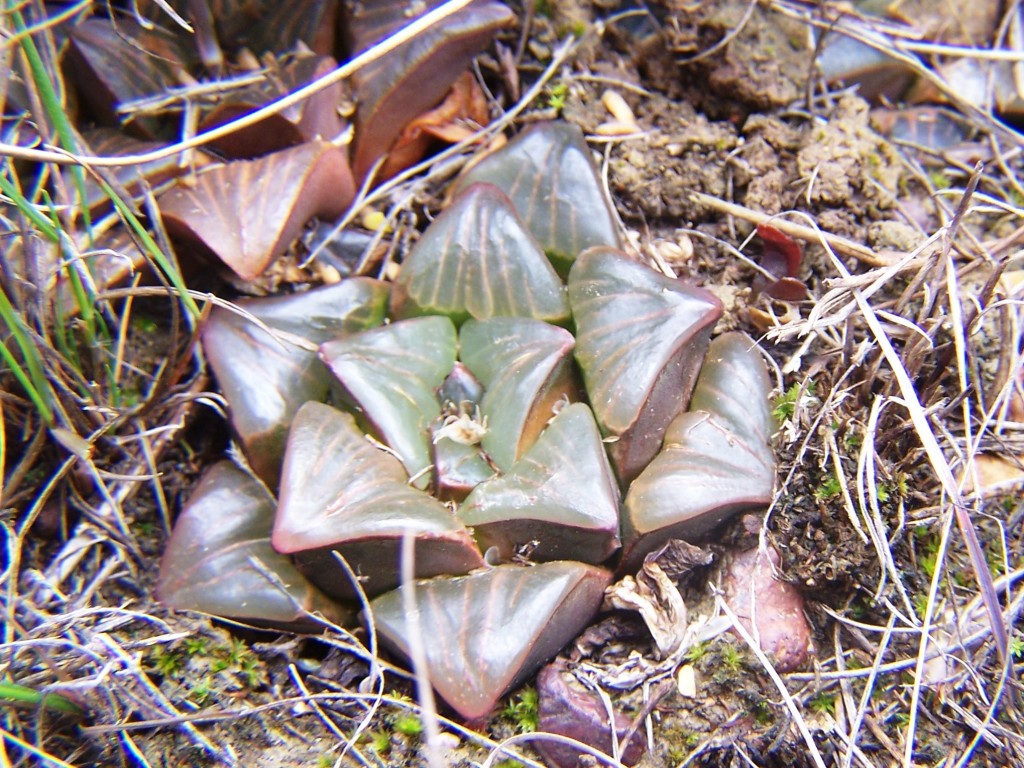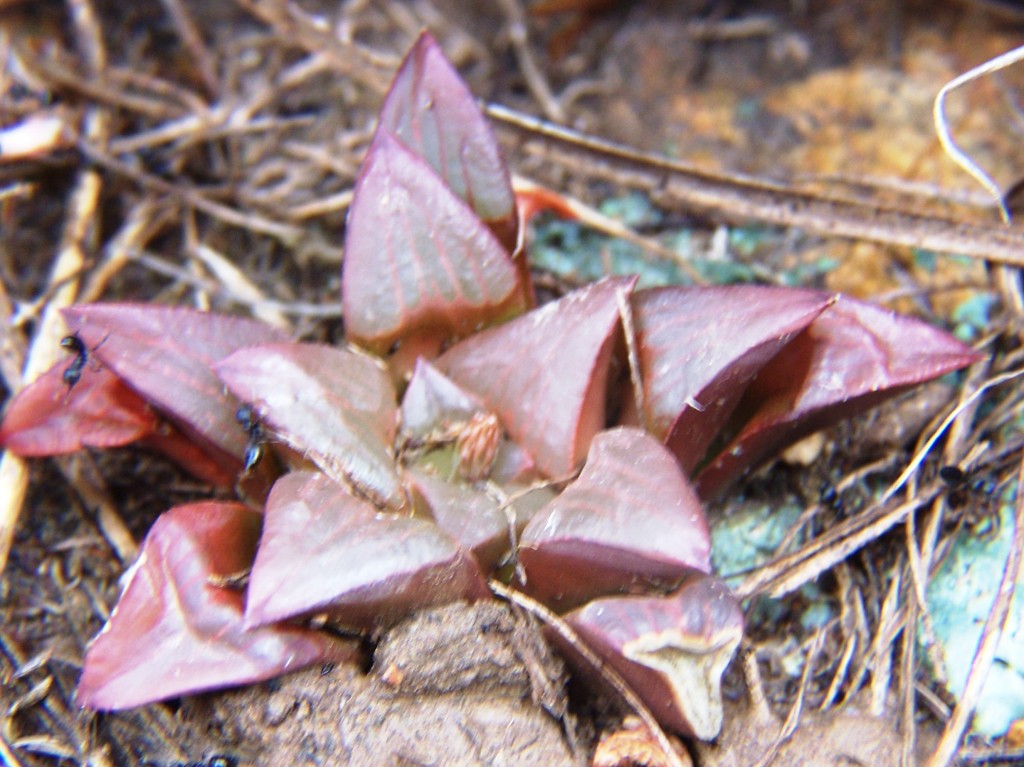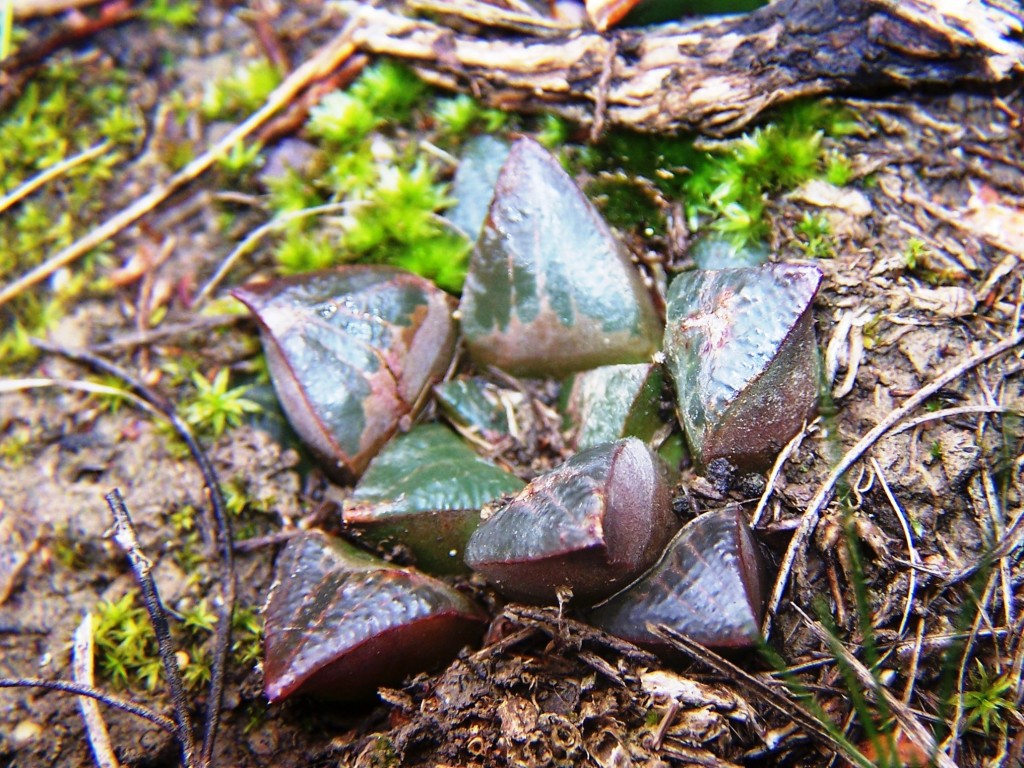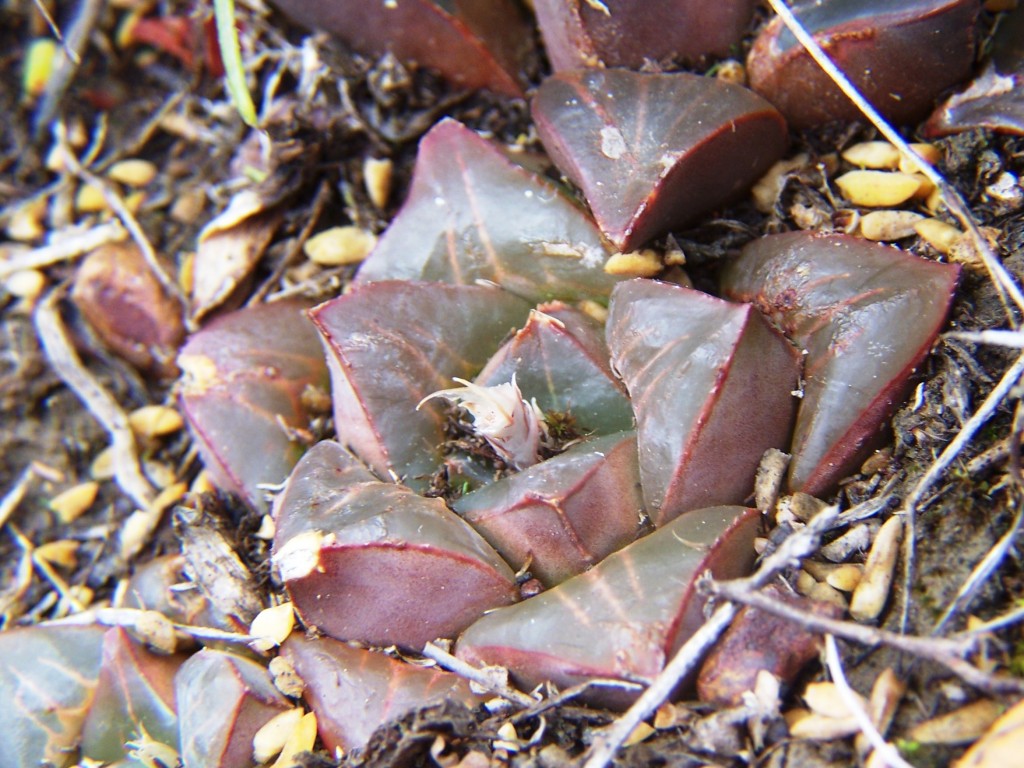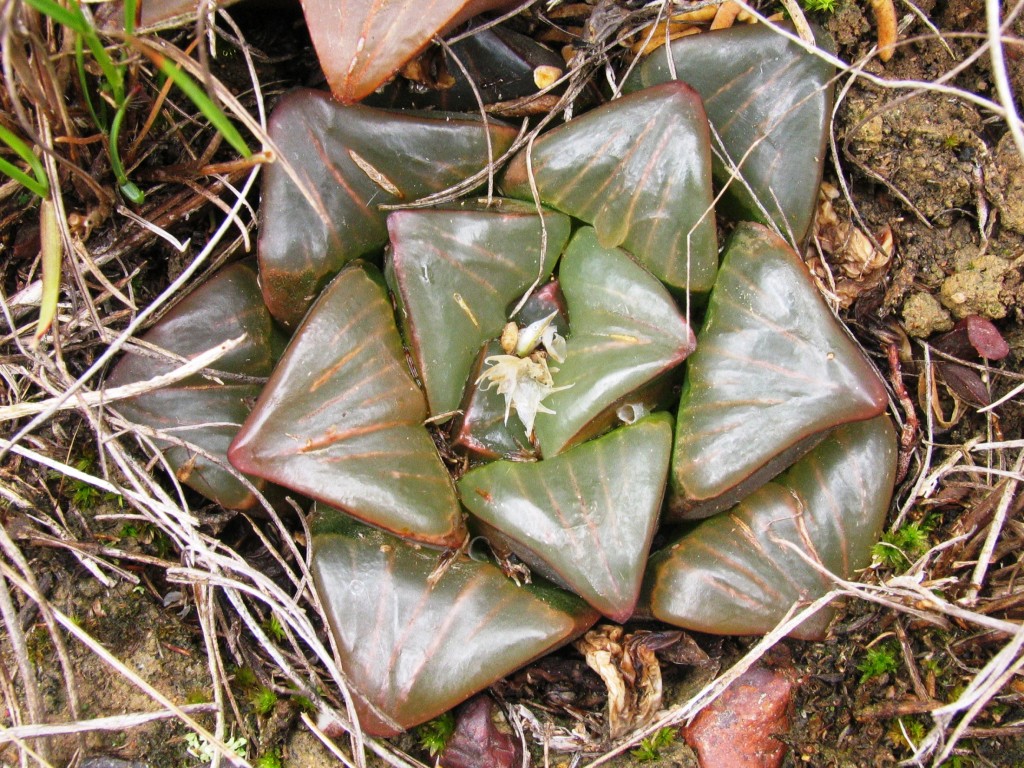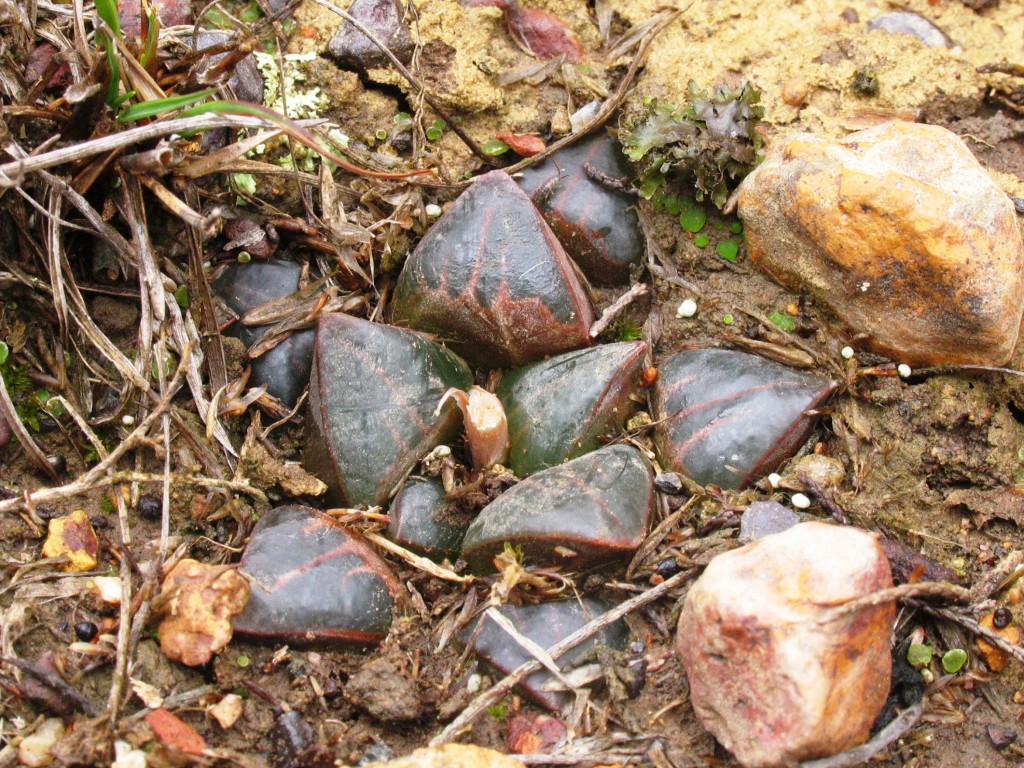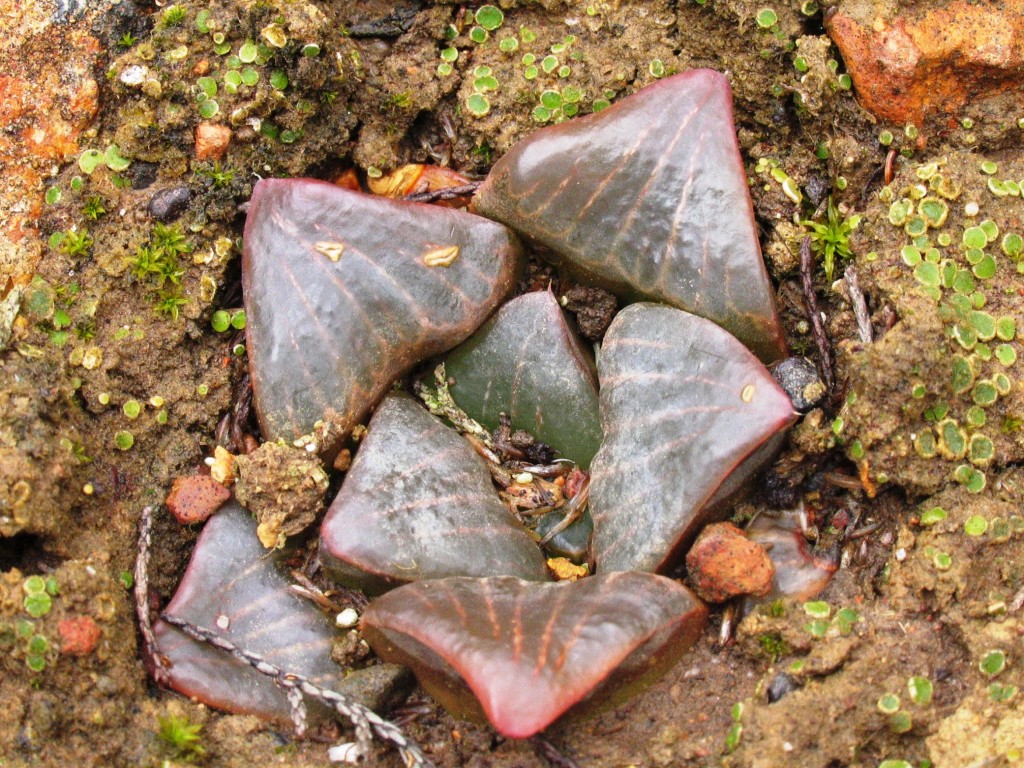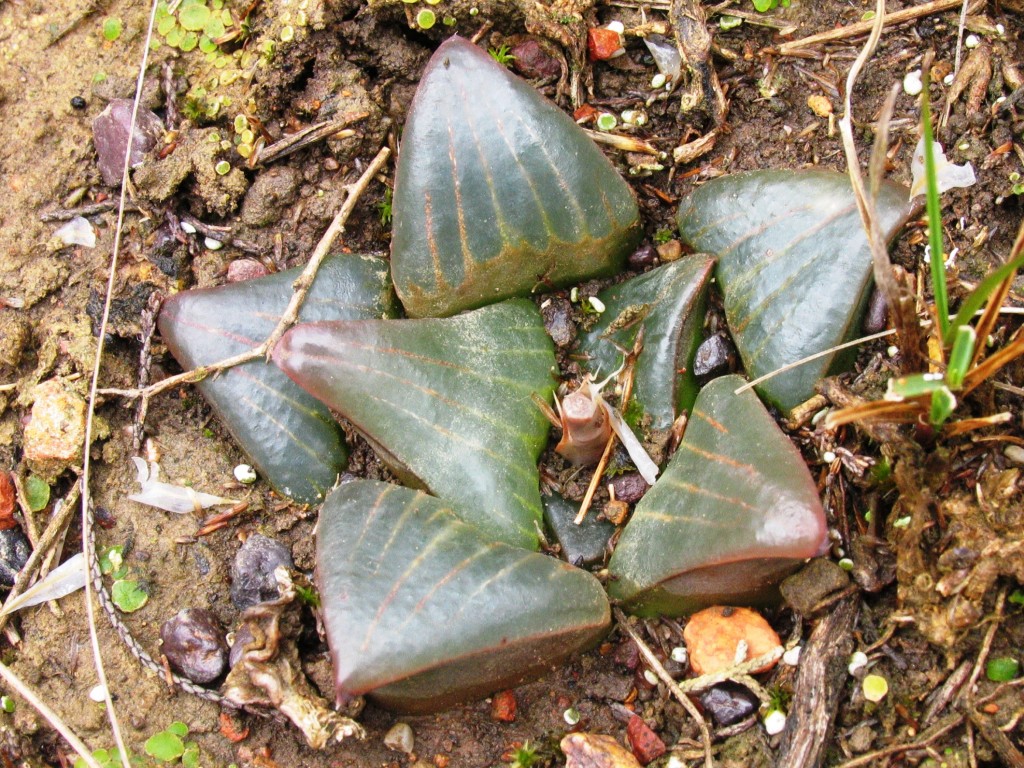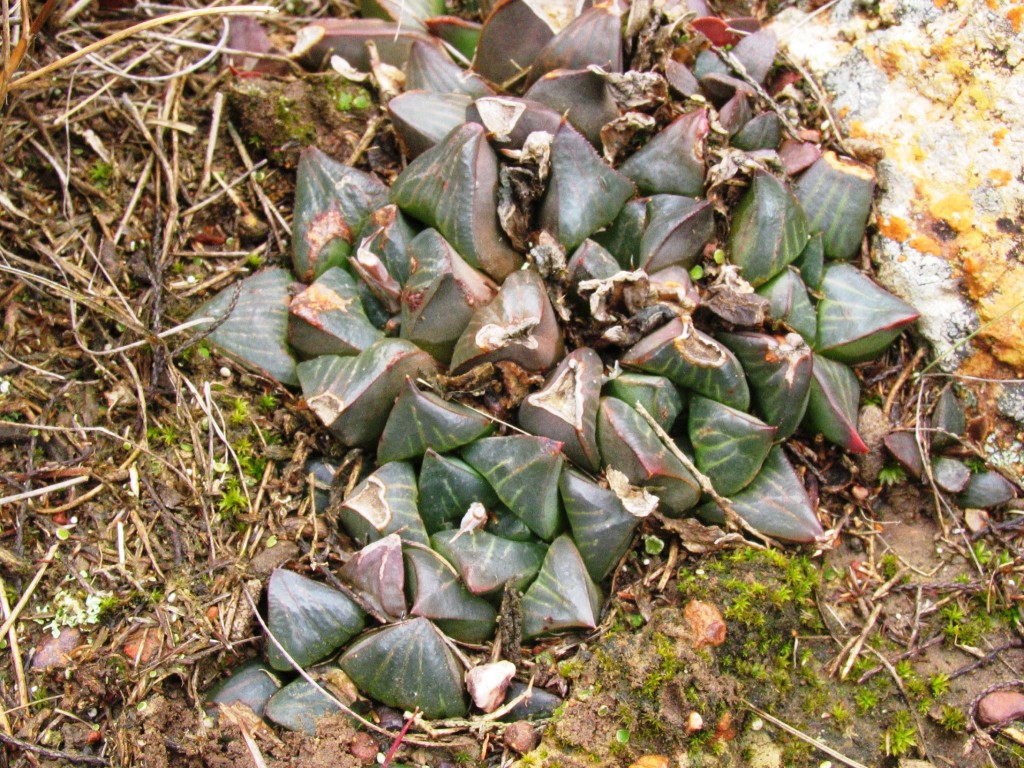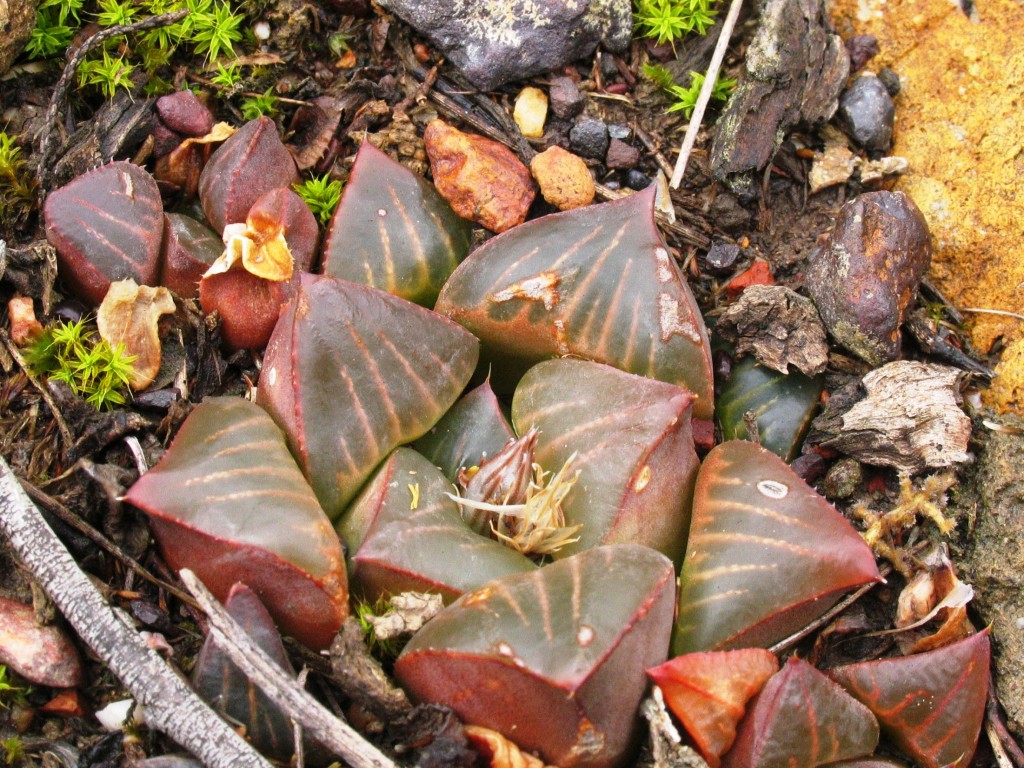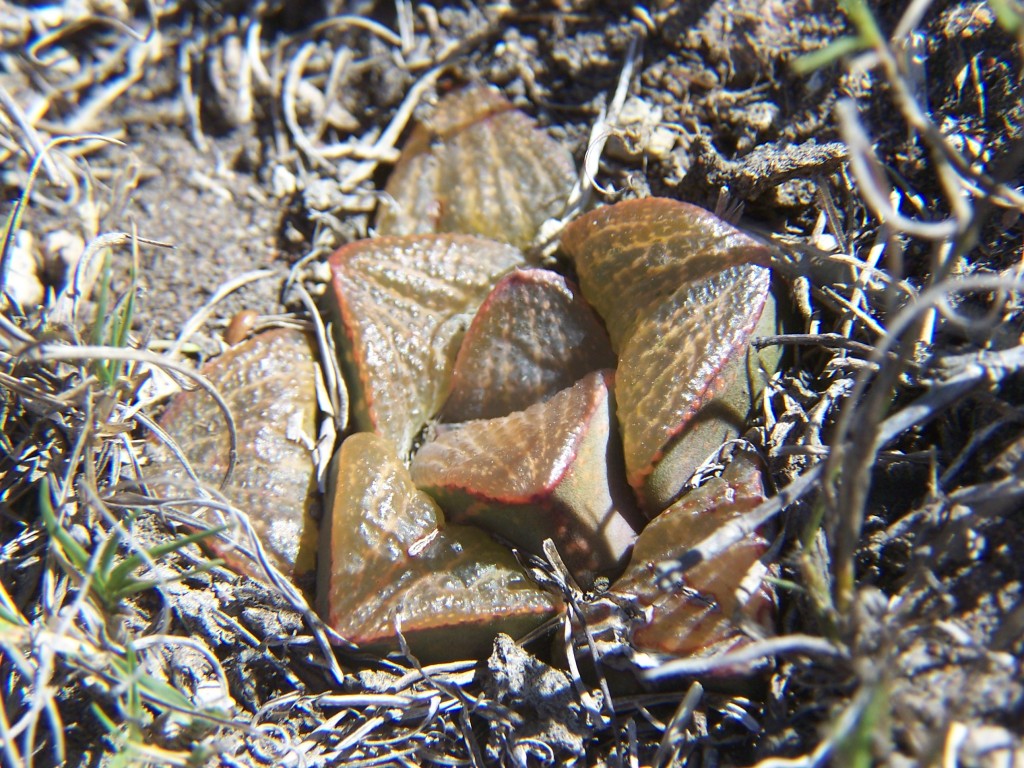It has long been my stated contention that H. turgida is in fact a rock face ecotype as opposed to the solitary flat growing H. retusa. Thus one should expect the multiplicity of forms that are found between, and consequently superfluous to say within each, these two primary types. There are problems outside of this and I will deal with those in the Chapter Haworthia enigma. Here I am simply going to present pictures representing plants in nine populations of the species. Most of these populations are of the “typical” solitary form and they all demonstrate variation to greater to lesser degree. Perhaps some special mention should be made of the element H. mutica var. nigra. I have written at length about this and in doing so strayed widely into H. magnifica and its var. atrofusca (both falling now under H. mirabilis). This is because it is quite certain that there is an element of interaction in the field between the prime elements H. retusa and H. mirabilis that this summation is intended to expose. The first known H. mutica var nigra from Kransriviermond is possibly the product of such interaction, whereas all the subsequent collections from northwards and westwards are now perceived by me to be variants of H. retusa and H. retusa ’turgida’ (to use a more informal and flexible way of communicating).
MBB7776 Pienaarsrivier. This is a population just west of Kweekkraal and the agglomeration of populations that I dealt with in a series of articles covering the diffuse nature of ‘nigra’. The population was first brought to my attention by Etwin Aslander but finally shown to me by Kobus Venter. It is extraordinary that it is not better known in the literature and again a vivid demonstration of how thoroughly one has to explore to uncover the mysteries of what constitutes species. It has always been difficult to adequately illustrate plants and probably the very weak appreciation we have for variation is precisely due to the fact that often species ere even described without any accompanying illustration. If there was one it was taken to be the exact image of many such that could all go by the same one name and this a Latin binomial. This is the paradigm that needs to change.
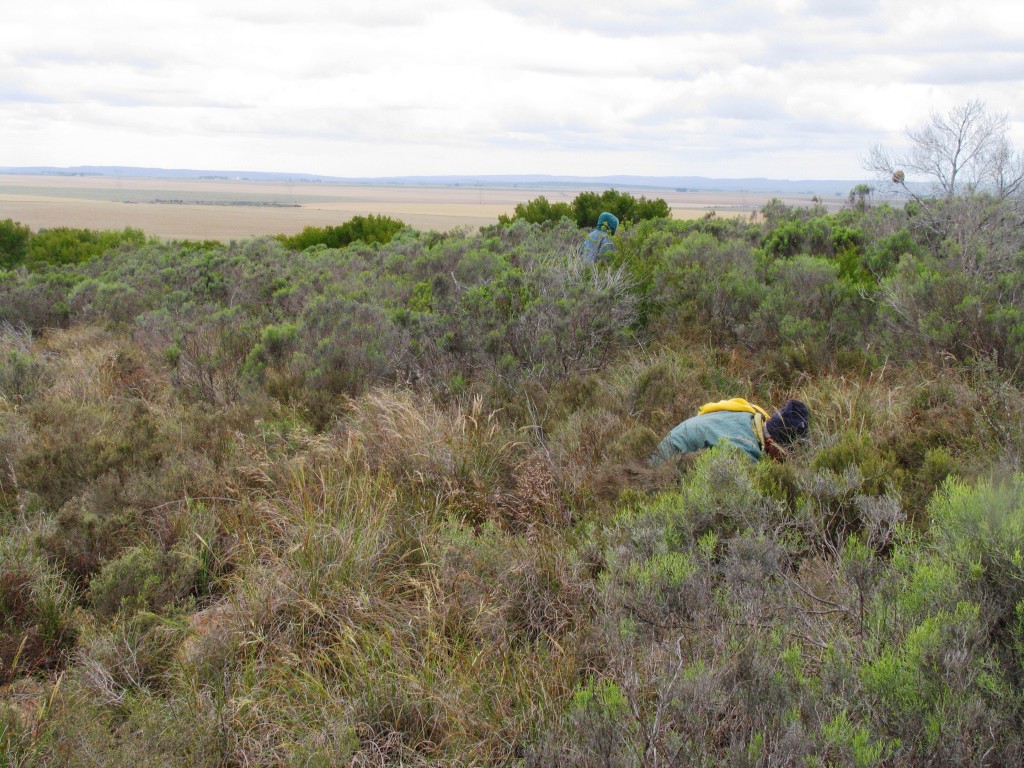
Pienaarsrivier – truffeling.
At Pienaarsrivier, the habitat can be described as an erosion product of the ferricreteinselbergs that are so characteristic of the lower areas of the Southern Cape. However, it is an extremely complex situation as there are high and low level gravel terraces as products of direct erosion off mountain sides, river gravels as a product of countryside drainage and then the iron rich ferricretes themselves as the products of deposition along groundwater movement. Here at Pienaarsrivier there is dense Renosterbos and grass among fairly large sized stones. The plants are abundant and they flower in October. I have eleswhere shown pictures of H. retusa from both eastwards at Kweekkraal (two populations) and from Heidelberg itself (many). The Pienaarsriver plants tend to have a very purplish hue and often the leaf tips are very rounded (mutica!)



